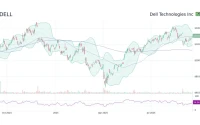The federal government is sending two completely contradictory signals about the future of hemp. One is a quiet, bureaucratic hum of normalization. The other is a loud, political siren of impending annihilation.
On one hand, we have the Food and Drug Administration methodically updating its adverse event reporting forms. As of September 2025, after a lengthy public comment period and final approval from the White House Office of Management and Budget, the official MedWatch system now includes a dedicated checkbox for "Cannabinoid Hemp Products" (FDA Is Now Tracking Adverse Health Events Related To Hemp Cannabinoids Like CBD Following White House Approval - Marijuana Moment). This is the mundane paperwork of permanence. It’s the government building the long-term infrastructure to monitor products containing CBD, CBN, and other cannabinoids as a legitimate, distinct category of consumer goods. This is what you do for a market you expect to exist next year, and the year after that.
On the other hand, we have a bipartisan faction in the House of Representatives trying to attach a legislative bomb to a must-pass spending bill. The provision, nearly identical to a failed amendment from the 2024 Farm Bill, would effectively ban all hemp products with any amount of THC. The Congressional Research Service—a non-partisan body not prone to hyperbole—concluded this would "effectively prohibit" the market. Industry advocates call it a "fatal blow."
These two actions cannot logically coexist. One prepares for a future of regulated data collection; the other seeks to ensure there is no future to collect data from. And I've looked at hundreds of these regulatory-legislative conflicts, and this particular disconnect is unusually stark. It’s a market caught between two opposing tidal forces, and the data points are pulling in opposite directions.
Normalization by a Thousand Forms
Let’s first analyze the bureaucratic signal, because it’s often the most reliable long-term indicator. Government agencies, particularly the FDA, move with glacial deliberation. The decision to amend Forms 3500, 3500A, and 3500B wasn’t a whim. It was announced in January, went through multiple public comment periods ending in July, and received final OMB approval in September. This is the slow, grinding machinery of state accepting a new reality.
By creating a specific category for hemp-derived cannabinoids, the FDA is tacitly acknowledging their unique place in the market. They are building a dataset. This allows them to distinguish an adverse reaction to, say, CBD gummies from one related to a pharmaceutical drug or a traditional food supplement. It’s a move toward regulatory clarity, a necessary first step before any meaningful rules can be established. This is, for all intents and purposes, the beginning of the end of the regulatory grey area.
This entire process is like a city government installing sophisticated traffic counters on a newly popular, unpaved side road. The installation itself is a powerful statement. It signals an intent to manage, study, and eventually pave that road. You don’t invest that kind of time and resources into something you plan to barricade and abandon next month.
So why, then, is Congress debating whether to dynamite the road entirely? Is the FDA’s right hand completely unaware of what the legislative left hand is doing? Or does the agency know something Congress doesn’t, proceeding with the quiet confidence that the prohibitionist effort will ultimately fail? The discrepancy here isn't just a political curiosity; it's a massive risk variable for an entire industry.
Annihilation by a Single Amendment
Now, let's turn to the political noise, which is far louder and more chaotic. A spending bill rider is a blunt instrument. It's a legislative maneuver designed to force a controversial issue through by attaching it to a bill that everyone has to vote for to keep the government running. The current proposed ban on hemp-derived THC is precisely this kind of high-stakes play.

The opposition is scrambling. We see qualitative data points in the form of letters from Democratic senators warning of "major upheaval," and we hear of Kentucky farmers pleading with Senator McConnell to reverse course. Senator Rand Paul (R-KY) is reportedly trying to broker a compromise. This isn’t a theoretical debate; it’s an active, five-alarm fire for thousands of businesses. The Hemp Industries Association estimates the ban would impact over 50,000 small businesses—to be more exact, their latest projection puts the number of directly affected businesses closer to 57,000.
This legislative threat isn’t new (an almost identical provision was stripped from a Senate bill after a procedural challenge from Sen. Paul), but its persistence is the key data point here. It shows a determined political will to roll back the 2018 Farm Bill's legalization of hemp.
The core of the issue is the legal distinction between hemp and marijuana, which hinges on a 0.3% delta-9 THC concentration limit. The amendment targets not just delta-9 but all "total THC," which would render the vast majority of popular CBD products, from CBD oil to CBD for pain creams, illegal. This is not a surgical strike against intoxicating products; it's carpet-bombing the entire sector. The dissonance is jarring: the FDA is trying to categorize these products while a faction in Congress is trying to criminalize them.
The Uncorrelated Wild Cards
If the situation weren’t complex enough, we have several outlier variables that defy easy categorization. These are data points that don't fit the simple "regulate vs. prohibit" narrative.
First, there's former President Donald Trump. In a video posted on his Truth Social platform, he extolled the health benefits of cannabis and floated the idea of covering hemp-derived CBD under Medicare. This is a political grenade. It scrambles the partisan lines and introduces a populist, pro-cannabinoid argument from a figurehead of the Republican party, directly contradicting the prohibitionist push from within his own party.
Second, there’s Senator Rand Paul’s HEMP Act. This isn't just a defensive measure; it's an aggressive counter-proposal to triple the legal THC limit in hemp from 0.3% to 1.0%. This isn’t a compromise; it’s a push for radical expansion of the market. It represents a data point at the far opposite end of the political spectrum from Rep. Miller's amendment.
Finally, there's the FDA's own mixed messaging. The same agency building tracking infrastructure had its director warn in July that cannabinoid use can lead to serious health issues like cardiac problems and psychosis. This adds another layer of uncertainty. Is the data collection for the purpose of eventual regulation or to gather evidence for a future crackdown?
How does any business model this kind of chaos? You have a federal agency preparing for long-term monitoring, a congressional faction pushing for immediate extinction, a leading presidential candidate suggesting federal subsidy, and a libertarian wing pushing for radical deregulation. The signals are not just mixed; they are fundamentally uncorrelated.
An Equation With Too Many Variables
My analysis is this: the hemp-derived cannabinoid market isn’t facing a simple regulatory risk. It’s caught in a vortex of competing governmental agendas. The bureaucratic signal from the FDA—the new forms, the data collection—is a slow, powerful current moving toward normalization and regulation. This is the institutional tide. In most industries, that would be the only signal that matters.
But here, the political noise is a hurricane. The legislative riders and high-profile political maneuvering represent an acute, short-term threat capable of wiping out the entire industry overnight. Businesses and investors are being forced to price in two diametrically opposed outcomes simultaneously. They are betting on whether the slow, deliberate work of a federal agency can withstand the chaotic, high-velocity whims of a handful of politicians. That’s not a sound basis for a stable market; it's the definition of a speculative gamble. The data points to a fundamental and unresolved conflict at the heart of federal policy.









